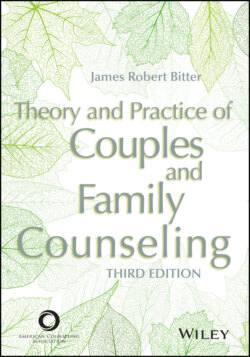Читать книгу Theory and Practice of Couples and Family Counseling - James Robert Bitter - Страница 49
The History of Family Counseling II: From Structure to Strategy to Solutions
ОглавлениеStarting in the late 1950s and the early 1960s, two conceptual centers emerged that would dominate family counseling and therapy for two decades. The first was the development of structural family therapy, led by the charismatic Argentine psychiatrist Salvador Minuchin. The other was the MRI model of strategic family therapy with its epistemology developed by Gregory Bateson and its practice by Don Jackson, Jules Riskin, Jay Haley, and John Weakland. Jay Haley would eventually leave MRI and head to the East Coast, where he would work with Salvador Minuchin before moving to Washington, DC, to establish the Family Therapy Institute of Washington, DC. Haley was the most prominent of many strategic therapists who were influenced by the hypnotherapy of Milton Erickson. Haley became the most prolific writer in the strategic model, and his work would influence the development of a strategic center in Milan, Italy, where a team headed by Mara Selvini Palazzoli would experiment with circular questioning and many different prescriptions.
Two therapists influenced by MRI training would eventually turn the strategic model on its head. Steve de Shazer and his spouse, Insoo Kim Berg, started the Brief Family Therapy Center in Milwaukee, Wisconsin. Together with colleagues, like Eve Lipchik, and their students, John Walter, Jane Peller, and Michele Weiner- Davis, they would cocreate solution-focused therapy. Later, Weiner-Davis would join with Bill O’Hanlon, slightly modifying the original model to create solution-oriented therapy.
